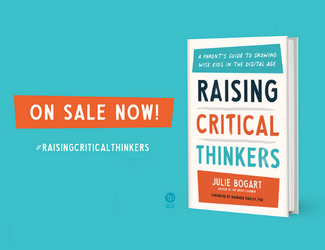Podcast: Am I Doing Enough? Part 2

In the first part of our series answering the question “How do I know if I’m doing enough for my kids’ education?” (which you should definitely listen to if you haven’t already), we discussed how to ensure you’ve done enough preparation and research for your homeschooling journey, as well as how to navigate subject mastery in pre-kindergarten and elementary school to meet the educational requirements.
Now, we’re excited to dive deeper into understanding “enoughness” for middle and high school students. In this second part, we will explore how to determine what’s sufficient for these older age groups and shed light on the third aspect: how much daily time should be committed to each subject.
Join us as we continue this important conversation and provide insights to help you feel confident and supported in your homeschooling experience.
Show Notes
Embracing the Goals of Middle School Education
Middle school education is a unique and exciting phase in a child’s learning journey. It’s a time to catch up on anything that didn’t click during the earlier years, while simultaneously providing opportunities for experiential learning and exploration. Middle schoolers benefit from a dynamic approach, including:
- workshops,
- museum visits,
- online classes,
- and participation in co-ops.
This stage in education also encourages deeper thinking, more writing, and opportunities for students to express their ideas and experiences.
It’s essential to recognize that middle school students come in various shapes, sizes, and intellectual abilities, with some having accumulated a wealth of knowledge that’s ready to bloom, while others still have considerable growth ahead. As homeschooling parents, it’s crucial to factor in the growth spread time and accommodate the changes that middle schoolers go through. This includes allowing for more:
- sleep,
- downtime,
- and moments of introspection.
The middle school years are a fantastic time for children to apply their existing skillset and indulge in their interests, whether it’s creating a circuit board, sewing a quilt, or redecorating their bedroom. Capitalize on their enthusiasm before the distractions of high school and social life take over. It’s also an excellent time for parents to learn from their children, as the script often flips and kids become eager to share their newfound expertise.
In terms of “enoughness” for middle school, the focus should be on:
- consolidating skills,
- empowering students to take on big, bold projects,
- and enjoying the fruits of their labor.
The goal is to provide a well-rounded education that balances subject mastery with hands-on experiences and personal growth. Remember to consult online scope and sequence resources for guidance on subject areas, but ultimately, strive to create a supportive environment that fosters curiosity, exploration, and the freedom to make mistakes. Don’t forget to allow space for apparent idleness, as these moments of “composting” can be essential for mental processing and growth. Embrace the middle school years as a time of tremendous potential and transformative learning experiences.
The Aim of High School Education
High school education aims to keep as many doors open as possible for students, allowing them to explore various paths and choose the direction they wish to pursue. It involves engaging in meaningful conversations with students about their interests, aspirations, and possible future paths, whether they involve:
- traditional college experience,
- apprenticeships,
- or exploring non-traditional subjects.
High school education should not be confined to a traditional school experience. Instead, it can involve immersing in different areas of interest, learning at one’s own pace, and developing unique skills that differentiate a student from their peers. This uniqueness can make homeschooled students particularly attractive to colleges, as they bring variety and fresh perspectives to the student body.
Parents and educators should not be afraid to give a unique character and flavor to the high school experience, encouraging students to explore their passions and interests, whether they are academic subjects or practical skills. This approach can involve reading books, engaging in discussions, or using different resources like movies, TV shows, or even joining acting troupes to gain a deeper understanding of various topics.
One essential aspect of high school education is keeping good notes on what students are doing and learning. Creating a narrative transcript allows parents and educators to track progress and showcase the student’s skills and expertise when applying to college or other opportunities.
High school education can also involve immersions or deep dives into specific subjects, allowing students to focus on one area intensely for a period of time. This approach can serve students well, as they can maximize their learning potential and avoid the pitfalls of having their day divided into smaller segments.
In summary, the goal of high school education is to provide students with a flexible, engaging, and personalized learning experience, enabling them to:
- explore their interests,
- develop unique skills,
- and choose the path that best suits their aspirations.
Encouraging deep immersion in subjects and providing opportunities for non-traditional learning experiences can help create well-rounded and interesting individuals who can succeed in various fields.
How to Spend Your Time
It is a common misconception that homeschooling requires hours of daily instruction for each subject. In reality, the time spent learning at home is often much less than in a traditional school setting due to reduced transitions, testing, and other non-instructional activities. Many homeschooling families find that they can complete their structured learning time by lunchtime, leaving the afternoons open for hands-on projects, nature walks, and other activities.
The amount of focused attention a child can give generally equals their age plus one minute (e.g., a 10-year-old can give 11 minutes of focused attention). This means that shorter, more engaging learning sessions are often more effective than trying to maintain focus for extended periods. It’s essential to allow for breaks and downtime for children to process and consolidate what they have learned.
Instead of attempting to cover every subject every day, homeschooling families may opt for a more flexible schedule, focusing on history or science through project-based learning or experiential activities. Some families even choose to have a four-day school week, taking one day for co-ops, therapy appointments, or other commitments.
A typical homeschool day might start with read-aloud time, broken up by conversations and various short readings from different genres. Then, after a break, the family might move to table-focused work, such as math or copy work. Another break and lunch would follow before transitioning to afternoon activities, which could include history or science projects, outdoor play, or errands.
It’s important to remember that learning doesn’t always have to follow a specific order or pace. Humans are naturally inclined to learn, and much of the learning that happens at home is organic and experiential. As homeschooling parents, it’s essential to recognize and value this type of learning, rather than expecting it to mimic the structure of traditional schooling. Embracing a more relaxed and flexible approach can lead to a more enjoyable and effective learning experience for both parents and children.
We must recognize that building and maintaining habits in a homeschooling environment takes time and practice. Whether it’s establishing a quiet time during the day or consistently incorporating read-alouds, these routines often require around six weeks to become ingrained in the family’s daily life. Parents play a crucial role in coaching their children to develop and adhere to these habits, as they are essential for a well-rounded homeschooling experience.
Contrary to some misconceptions, homeschooling does teach children to stick to and complete tasks, as long as parents are mindful of creating a supportive and structured environment that fosters healthy habits and encourages lifelong learning.
Resources
- Podcast: The Learning Benefits of Travel & Taking Big Risks with Blake Boles
- Introducing Teens to Unschooling Liberation with Grace Llewellyn
- Get 10% off our Growing Brave Writers program using code GBWPOD10 at https://store.bravewriter.com/products/growing-brave-writers
- Sign up for our Text Message Pod Ring to get podcast updates and more!
- Send us podcast topic ideas by texting us: +1 (833) 947-3684
- Want help getting started with Brave Writer? Go to bravewriter.com/getting-started
- Sign up for the Brave Writer newsletter to learn about all of the special offers we’re doing in 2022 and you’ll get a free seven-day Writing Blitz guide just for signing up: http://go.bravewriter.com/writing-blitz
Connect with Julie
- Instagram: instagram.com/juliebravewriter
- Twitter: twitter.com/bravewriter
- Facebook: facebook.com/bravewriter


















